
Taoism, also known as Daoism, is a philosophical and spiritual tradition or religion of Chinese origin which emphasizes living in harmony with the Tao. In Taoism, the Tao is the source, pattern and substance of everything that exists. Taoism teaches about the various disciplines for achieving "perfection" by becoming one with the unplanned rhythms of the all, called "the way" or "Tao". Taoist ethics vary depending on the particular school, but in general tend to emphasize wu wei, "naturalness", simplicity, spontaneity and the Three Treasures: 慈, "compassion", 儉, "frugality" and 不敢為天下先, "humility".
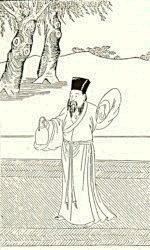
Wang Chongyang was a Chinese philosopher and poet. He was a Taoist and one of the founders of the Quanzhen School in the 12th century during the Jin dynasty (1115–1234). He was one of the Five Northern Patriarchs of Quanzhen. He also appears as a character in works of wuxia fiction.
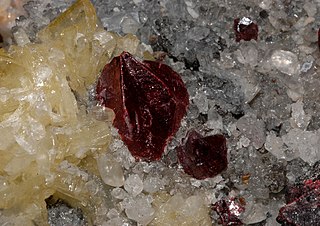
Chinese alchemy is an ancient Chinese scientific and technological approach to alchemy, a part of the larger tradition of Taoist / Daoist body-spirit cultivation developed from the traditional Chinese understanding of medicine and the body. According to original texts such as the Cantong qi, the body is understood as the focus of cosmological processes summarized in the five agents of change, or Wuxing, the observation and cultivation of which leads the practitioner into alignment and harmony with the Tao. Therefore, the traditional view in China is that alchemy focuses mainly on longevity and the purification of one's spirit, mind and body, providing, health, longevity and wisdom, through the practice of Qigong, wuxingheqidao. The consumption and use of various concoctions known as alchemical medicines or elixirs, each of which having different purposes but largely were concerned with immortality.
Moy Lin-shin was a Taoist monk, teacher and T'ai chi instructor who founded The Taoist Tai Chi Society (道教太極拳社), the Fung Loy Kok Institute of Taoism and the Gei Pang Lok Hup Academy.
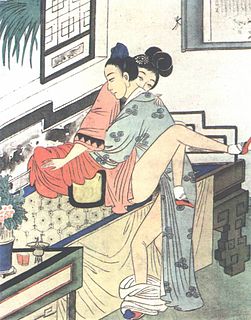
Taoist sexual practices are the ways Taoists may practice sexual activity. These practices are also known as "joining energy" or "the joining of the essences". Practitioners believe that by performing these sexual arts, one can stay in good health, and attain longevity or spiritual advancement.

Neidan, or internal alchemy, is an array of esoteric doctrines and physical, mental, and spiritual practices that Taoist initiates use to prolong life and create an immortal spiritual body that would survive after death. Also known as Jindan, inner alchemy combines theories derived from external alchemy, correlative cosmology, the emblems of the Yijing, and medical theory, with techniques of Daoist meditation, daoyin gymnastics, and sexual hygiene.
The Huahujing is a Taoist work, traditionally attributed to Laozi.
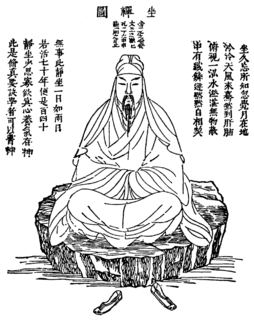
The microcosmic orbit (小周天), also known as the Self Winding Wheel of the Law, is a Taoist Qigong energy cultivation technique. It involves deep breathing exercises in conjunction with meditation and concentration techniques which develop the flow of qi along certain pathways of energy in the human body which may be familiar to those who are studying traditional Chinese medicine, Qigong, T'ai chi ch'uan, Neidan and Chinese alchemy. The exercise can be performed usually at first in a sitting position, but it can also be practiced standing as in Zhan zhuang or with movements included as with T'ai chi ch'uan.

Xian refers to a person or similar entity having a long life or being immortal. The concept of xian has different implications dependent upon the specific context: philosophical, religious, mythological, or other symbolic or cultural occurrence. The Chinese word xian is translatable into English as:
The Shangqing School (Chinese:上清), also known as Supreme Clarity or Highest Clarity is a Daoist movement that began during the aristocracy of the Western Jin dynasty. Shangqing can be translated as either 'Supreme Clarity' or 'Highest Clarity.' The first leader of the school was a woman, Wei Huacun (251-334). According to her Shangqing hagiographers, her devotion to Daoist cultivation so impressed a number of immortals that she received revelations from them 31 volumes of Daoist scriptures which would become the foundation of Shangqing Daoism. Later, Tao Hongjing, a man, (456-536) structured the theory and practice and compiled the canon. He greatly contributed to the development of the school that took place near the end of the 5th century. The mountain near Nanjing where Tao Hongjing had his retreat, Maoshan, today remains the principal seat of the school.
The Wuzhen pian is a 1075 Taoist classic on Neidan-style internal alchemy. Its author Zhang Boduan was a Song dynasty scholar of the Three teachings.
Wang Liping, Daoist Name WANG Yong-sheng,法号"灵灵子", means "Lone Daoist". Born in June 1949 at the Mountain foot of the Liaoning Province Fushun City. He is the 18th generation transmitter of the Dragon Gate Taoism branch of Quanzhen School.
Fangshi were Chinese technical specialists who flourished from the third century BCE to the fifth century CE. English translations of fangshi include alchemist, astrologer, diviner, exorcist, geomancer, doctor, magician, mountebank, monk, mystic, necromancer, occultist, omenologist, physician, physiognomist, technician, technologist, thaumaturge, and wizard.
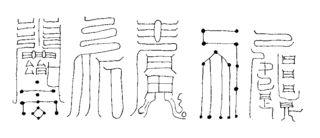
The Baopuzi, written by the Jin dynasty scholar Ge Hong 葛洪 in 283–343, is divided into esoteric Neipian 內篇 "Inner Chapters" and equally exoteric Waipian 外篇 "Outer Chapters". The Taoist Inner Chapters discuss topics such as techniques to achieve "hsien" 仙, Chinese alchemy, elixirs, and demonology. The Confucian Outer Chapters discuss Chinese literature, Legalism, politics, and society.
The Quanzhen School, also known as Completion of Authenticity, Complete Reality, and Complete Perfection is currently the most dominant branch of Taoism in continental China. It originated in Northern China in 1170 under the Jin dynasty (1115–1234). One of its founders was the Taoist Wang Chongyang, who lived in the early Jin. When the Mongols invaded the Song dynasty (960–1279) in 1254, the Quanzhen Taoists exerted great effort in keeping the peace, thus saving thousands of lives, particularly among those of Han Chinese descent.

Evgeny Torchinov, , was a Russian sinologist, Buddhist scholar, professor, and translator. He was best known as an eminent Russian researcher of ancient Chinese religion and philosophy, author of many books and translations of classical Chinese texts into Russian. He founded the chair of Eastern philosophy and cultures at St. Petersburg State University.

Liu Yiming (1734–1821) was a Chinese ophthalmologist, philosopher, and writer. He was one of the main representatives of Taoist Internal Alchemy, or Neidan. He was an 11th-generation master of one of the northern branches of the Longmen 龍門 lineage, and the author of a large number of works that illustrate his views on both Taoism and Neidan.
The following outline is provided as an overview of and topical guide to Taoism:
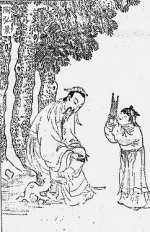
Tao Hongjing (456–536), courtesy name Tongming, was a Chinese polymath writer, calligrapher, waidan alchemist, pharmacologist, musician, and astronomer during the Northern and Southern dynasties (420–589). He is best known as a founder of the Shangqing "Highest Clarity" school of Daoism and the compiler-editor of the basic Shangqing religious texts.

Taoist philosophy also known as Taology refers to the various philosophical currents of Taoism, a tradition of Chinese origin which emphasizes living in harmony with the Dào. The Dào is a mysterious and deep principle that is the source, pattern and substance of the entire universe.











